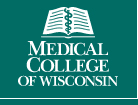Dynamic Splinting for Plantarflexion in Spastic Hemiplegia
| Status: | Completed |
|---|---|
| Conditions: | Neurology |
| Therapuetic Areas: | Neurology |
| Healthy: | No |
| Age Range: | 18 - 80 |
| Updated: | 11/30/-0001 |
| Start Date: | May 2011 |
| End Date: | August 2015 |
| Contact: | JOHN MCGUIRE |
| Email: | JMCGUIRE@MCW.EDU |
| Phone: | 608 206-2525 |
Dynamic Splinting for Excessive Plantarflexion in Patients With Spastic Hemiplegia: A Randomized, Controlled Study of Gait Analysis
The purpose of this study is to examine the effectiveness of onabotulinum toxin A (BTX)
injections (tone management) and dynamic splinting (contracture reduction) for improving
gait patterns in patients with spastic hypertnoia due to stroke or traumatic brain injury
and resultant excessive plantarflexion.
Inclusion Criteria:
- Patients enrolled will be male or female, be at least 18 years of age, and have been
diagnosed with spastic hemiplegia and excessive plantarflexion, which includes the
following:
1. Diagnosis of a stroke or traumatic brain injury more than 6 months prior to
enrollment in this study
2. Reduced AROM and PROM in ankle dorsiflexion
3. Ability to ambulate safely 20 feet without an ankle-foot orthosis (AFO)
4. Inability to ambulate with initial heel-contact
5. No prior BTX treatment within 6 months
6. R1 of -10° or greater (using the Tardeiu method of assessment)
7. Mean Ashworth Scale Test ≥3 for plantarflexors
Exclusion Criteria:
1. Bell's Palsy
2. Viral Encephalitis
3. Muscular Dystrophy
4. Multiple Sclerosis
5. Prior heel-cord lengthening or tendon-transfer procedure in the foot/ankle
6. Subjects with a fixed contracture of the ankle
7. Female subjects who are pregnant (positive urine pregnancy test), who have an infant
they are breastfeeding, or are of childbearing potential and do not practice a
reliable method of birth control
8. Bleeding disorders
9. Diagnosis of a disease that may interfere with neuromuscular function (ie. Myasthenia
Gravis, Lambert-Eaton Myasthenic Syndrome, amyotrophic lateral sclerosis)
10. Subjects currently using aminoglycoside antibiotics, curare-like agents, or other
agents that may interfere with neuromuscular function
11. Subjects with profound weakness or atrophy of the muscles in the target areas of
injection
12. Active systemic infection or infection at the injection site
13. Allergy or sensitivity to botulinum toxin A
We found this trial at
1
site
Medical College of Wisconsin The Medical College (MCW) of Wisconsin is a major national research...
Click here to add this to my saved trials
